Acupuncture & TCM Articles
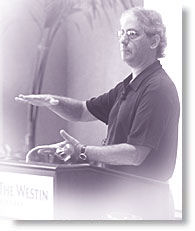
Articles by Jake Paul Fratkin, OMD, LAc
Jake Fratkin, OMD, LAc, has been in the practice of Oriental medicine since 1978. Following undergraduate and graduate training at the University of Wisconsin in Chinese language and philosophy and pre-medicine, he pursued a seven-year apprenticeship in Japanese and Korean style acupuncture with Dr. Ineon Moon and a two-year apprenticeship in Chinese herbal medicine with Drs. Zhengan Guo and Pak-Leung Lau in Chicago. He also spent a year in Beijing hospitals interning in advanced herbal medicine, specializing in gastrointestinal and respiratory disorders, and pediatrics. 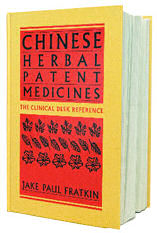 Dr. Fratkin is the author of several books, including Chinese Herbal Patent Medicines: The Clinical Desk Reference, and is the editor-organizer of Wu and Fischer's Practical Therapeutics of Traditional Chinese Medicine. In 1999, he was named the "Acupuncturist of the Year" by the American Association of Oriental Medicine.
Dr. Fratkin is the author of several books, including Chinese Herbal Patent Medicines: The Clinical Desk Reference, and is the editor-organizer of Wu and Fischer's Practical Therapeutics of Traditional Chinese Medicine. In 1999, he was named the "Acupuncturist of the Year" by the American Association of Oriental Medicine.
Chinese Herbal Patent Medicines: The Clinical Desk Reference
Hardback book, 1198 pages. This volume covers 1360 products, including 550 GMP level products and all of California FDB analysis on 505 products. Includes information on endagered animals, heavy metals, and pharmaceuticals. The text is organized into 12 groups, with a total of 109 chapters and includes material by Andrew Ellis, Subhuti Dharmananda, and Richard Ko. Over 80 pages of full-color photos (with English and Chinese cross-reference). Fully indexed.
Using Muscle Testing in Meridian Therapy
There are certain challenges in using Japanese Meridian Therapy, including determining the correct sho or pattern, as well as choosing the best therapeutic points. This can be especially difficult in weakened or chronic patients where pulse differentiation is fuzzy or indiscernible, and in diagnosing infants and small children. The purpose of Meridian Therapy is obvious: to bring the yin and yang pulses into balance and restore the overall quality to that of a healthy pulse. This should be done with a minimum of needles.
THE WORK OF DR. INEON MOON. When I first started on the path of Meridian Therapy under Dr. Ineon Moon 23 years ago, he demonstrated the value of muscle testing for determining excesses and deficiencies in the channels. He learned the actual technique from chiropractors using Applied Kinesiology (AK), who would test a patient´s arm or leg for relative strength. In AK, the patient, the doctor, or a third party touches a spot on the body (this is called therapy localization) and then test an indicator limb to see if it goes weak. Dr. Moon used this technique to make his own discoveries. He learned that if one finger touched a point and the indicator muscle was weak, this indicated a deficiency, and that if two fingers touched (usually patient and practitioner together), this indicated an excess.
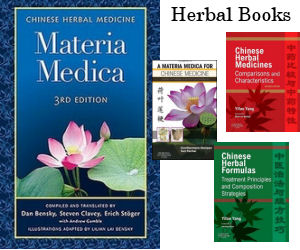
Dr. Moon used this technique to show which channels were excessive and which channels were deficient. He then relied on the traditional Five Phase relationships to bring the channels back into equilibrium. For example if Liver was excess and Lung was deficient, he might tonify the wood point of the Lung, or sedate the metal point of the Liver. Clinically, he liked to move the energy of a channel of excess to a channel of deficiency when possible. In all cases he used muscle testing to confirm if his treatment was effective.
Muscle testing became a frequent research tool for Dr. Moon. For example, he would hold different colored poster paper in front of a patient one at a time to see which color made the patient´s arm weak (red, yellow, blue, white, black). If a patient became weakened with one particular color, that indicated the deficient phase: red-Fire (Ht, PC), yellow-Earth (Sp), blue-Wood (Liv), white-Metal (Lu) or black-Water (Ki). He also showed that patients could be weak when facing in a particular direction: south-Fire, west-Metal, north-Water, and east-Wood. (Earth is at the center.) This meant that an inherently weak meridian could cause any indicator muscle to go weak if facing in the weak direction. This puts a damper on conventional muscle testing knowing that one out of four directions might weakened a patient´s response on any inquiry!
THE PROBLEM OF SWITCHING. Another of Dr. Moon´s discoveries was that of “switching’, which he taught to the AK practitioners. Switching means that the body is giving an inaccurate muscle response because the energy is switching at certain acupuncture network crossing points. The cause of switching include stress or fatigue, exposure to strong electromagnetic fields such as computers, certain pharmaceuticals (especially analgesics and tranquilizers), and marijuana. When the body is switched, not only will muscle testing be inaccurate, but the therapeutic effects of acupuncture will be greatly diminished. This is why patients on painkillers or marijuana have a mediocre response to acupuncture.
Dr. Moon created a test for switching: he had the patients touch both of their thumbs and pinky fingers while he tested an indicator muscle. If this weakened, it meant they were switching. He discovered certain “dejamming’ points which, when vigorously massaged, would reverse or eradicate switching. These points include Du 4, Du 15, Du 20, Du 26, Ren 24, Ren 5-6, Sp 21, and then the crossing points of the limbs - TW 8, PC 6, Sp 6, and GB 37. In practice, it was often enough to massage in a circular fashion Du 4, Ren 5-6, and Sp 21. Du 26 and Ren 24 would also accomplish this. I recommend that one do this to all patients before any diagnosis or treatment.
If the practitioner is switched (which is common due to fatigue), he or she cannot muscle test accurately. This is a frequent reason why certain practitioners get erroneous findings. Dr. Moon encouraged practitioners to dejam themselves prior to any testing, by rubbing Du 26-Ren 24, or Ren 5-6, etc. I have found that focused Dantian/Hara breathing while working prevents switching, but if you find yourself getting spacey or unfocused, it´s a good idea to dejam yourself.
MUSCLE TESTING YOURSELF INSTEAD OF THE PATIENT. Over the years I have learned to muscle test my own fingers rather than the patient´s arm or leg to make a diagnosis. I have found it difficult to rely on the muscle testing of patients because they vary so much in strength. Some will weaken with every attempt because they are weak; others will weaken because it validates their complaint (“If this is weak, I really do have a problem’). Or there is the macho man response - “You can´t overpower me!’
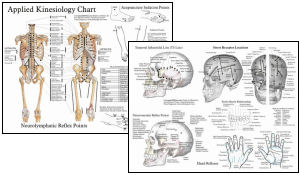
There are several reasons I prefer to test myself. Foremost, by avoiding the pitfalls and variations of testing patents, it is ultimately faster and more accurate. Second, it is difficult to muscle test a patient once needles are in place, especially if the needles are in the wrist or arm. Third, I can test many points along the arms, legs and torso quickly if I only test myself. And finally, I can do this technique without any fanfare. Patients seldom notice what I am doing, and if they do and ask, they readily accept my explanation that I am muscle testing my own fingers to determine excesses and deficiencies on their points.
If you are already comfortable with muscle testing the patient´s arm or leg, then of course proceed with your method. Remember, you are not trying to push the muscle over or win a contest. You are feeling the reactive strength of the muscle before and after therapy localizing.
I muscle test myself with O-ring testing. O-ring testing originated with Dr. Yoshiaki Omura and has been promoted by Dr. Miki Shima, but this method required testing the patient´s fingers. In self O-ring testing, I recommend the following method for right handed practitioners. (Left handed practitioners merely reverse the roles of the hands.) Make an O-ring with your left hand, that is, make a ring shape by touching your thumb and index finger. Then hold your index finger and thumb from your right hand flat and together, and place them into the circle created by the index finger and thumb of your left hand. You want to open the left hand circle by slowly separating and spreading your right hand index finger and thumb.
You can train yourself by using an AA battery. Hold the battery in one of your hands and determine the minimum amount of pressure require to separate your left hand thumb and index finger. Now put the battery down and use exactly the same amount of strength to separate the fingers in the same way. At this point, the fingers should not separate. Pick up the battery again and confirm the minimum amount of separating pressure required to open the fingers. Again, let go of the battery and use the same amount of separating pressure. The fingers should not open. Do this as a training, over and over and over again until your fingers sense the minimum amount of pressure required. My experience is that when a meridian point is weak, it acts the same as with the AA battery. The fact that you trained yourself on an AA battery prepares you for feeling, sensing and responding in the same way to a weakened point. This may take some time.
DETERMINING POINTS OF DEFICIENCY OR EXCESS.
Once you have mastered your ability to O-ring muscle test and you trust this ability, you can use it to test for imbalances on acupuncture points. The method is to use one of your free fingers on your right hand to therapy localize the point. I use my ring finger. If a point is deficient and requires treatment, one finger touching that point will make the O-ring go weak. A point that is often weak on patients is Liv 8, and this is a good point to practice testing yourself or others. Of course, exact location is required, so travel around a little until your find the “presently alive point’.
Points that are excess usually show on the yang channels, particularly Stomach or Gallbladder. To determine which point is involved, touch with your right hand ring finger, and place the ring finger from the left hand on top of it. This is in accordance with Dr. Moon´s two finger protocol to determine excess. If your O-ring goes weak, this point is excess and needs to be drained.
Besides determining points for Meridian Therapy, O-ring testing is also effective for choosing local points in a treatment. In headache, for example, I always find points that are deficient in the general area of the headache itself. Placement of needles here, in combination with the correct root treatment, will treat that headache favorably. The same can be said for local injury, which will show either as deficiency or excess.
USING MUSCLE TESTING IN CLINICAL PRACTICE.
Muscle testing does not show all points that need to be treated, only those which are most seriously affected.That is to say, if I find a point that weakens the O-ring, I must treat that point. Following this, I evaluate the pulse for the overall effect, or for other imbalances. Often, the muscle tested points are the only ones that require treatment, even if the whole treatment only uses one or two needles.
To give an example of it successfulness, I treated a rather nervous and neurotic patient who had many complaints: injuries from an auto accident with accompanying headache and dizziness, with a prior history of endometriosis with severe dysmenorrhea. She was very controlling and would only allow two or three needles retained for no more than five or six minutes. Despite shallow insertion (about 1 mm), she complained with every needle. I thought she was a professional patient who was deeply invested in keeping her problems. I treated her once a week in fifteen minute sessions for ten weeks, but I was not confident that I would have much success with her. Although she only allowed me to do root treatment, by the end of the ten sessions she was a changed person. She was happy, content and cheerful. She reported that her dysmenorrhea, headache and dizziness were completely gone, and that her joint problems were much improved. As I have told this story before, I chalked it up to the miracle of Meridian Therapy. But I think equal credit is due to the fact that muscle testing correctly diagnosed her most imbalanced points, allowing for a focused treatment.
The point of muscle testing is that it is a tool that you integrate into your own style or system. You can use it to confirm patterns, make point selection, and determine if treatment is effective. There are other tangible benefits from using this technique. For myself, it has gradually trained my finger to feel if the point is excess or deficient, even before muscle testing confirms the result. Also I can diagnose young children without pulse diagnosis, and be certain of my point selection for treatment. I have seen excellent clinical results using this with pediatric cases.
MY TREATMENT PROTOCOL.
I would like to describe the treatment protocol I am currently using. You can see that I integrate muscle testing and pulse diagnosis together. Also, I have developed a working routine that can be applied to all patients, regardless of their complaint. This makes for an efficient and relaxed practice.
FRONT SIDE TREATMENT.
The patient is clothed, with elbows, knees, and belly exposed.
1) I lightly brush my fingers checking for rough or damp skin on the abdomen, and use single needle pecking on those area.
2) I check Ren 12 and Ren 5-6 area, and if they are weak, I put in a 40mm #3 metal needle, with moxa on the needle. Also I check Du 20-22, which I treat with a 40 mm #1 needle, without moxa. About 80% of my patients need to have these points treated.
3) I then check certain key channel and points, and treat them immediately if they show the need. The actual muscle testing diagnosis is done quickly. I usually check an arm and a leg on one side, then move to the other side arm and leg. When I do this, I check most points for deficiency; a few I test for excess (E).
The points are:
HT 3, 7; PC 3, 6, 7; LU 5, 7, 9.
LI 4, 5 (E for excess), 11(E); TW 4, 5; SI 1, 3, 6.
SP 1, 3, 4, 5 (E), 6, 9; LIV 1, 2(E), 3, 5, 8; KI 1, 2, 3, 6, 10.
ST 45, 44 (E), 41, 36; GB 43(E), 41, 40, 38 (E), 34; BL 67, 64, 62.
Typically only one or two points show deficiency by this method, and I treat with a 30mm #1 or #0 needle. I use qi gong to send mind-thought and energy down the shaft of the needle, into the point, and up the channel. I try to extend my energy so that it reaches DU 20, Baihui on the patient.
If there are excesses, which are only occasionally, I sedate with a 30mm #3 metal handle needle. If a deficient point is an Eight Extraordinary Channel point (TW 5, GB 41, Sp 4, etc.), I will treat it with a 30mm #3 metal needles, which I will connect with Ion Pumping Cords to its partner on the other side of the body. I believe that this circulates the energy in a spiral fashion.
4) I now look at the pulse to see what is still out of balance. Often, what we have done is enough to balance the yin and yang pulses. Occasionally a channel may appear excess and I will look for a point on that channel and treat it with sedation technique. When there are remaining deficiencies, I have discovered that they are usually paired according to Eight Extra Channel patnerships (PC-SP, KI-LU, TW-GB, SI-BL, LI¬ST, LIV-PC). I always treat these using their Eight Extra Channel points (TW 5, GB 41, etc.) again with 30mm #3 metal handle needles. I connect them across the body with Ion Pumping Cords to their partner master point. It is essential that I muscle test the correct direction of the cords, which I do by testing on the box switch. If you are using unidirectional cords, you can hook up and muscle test at the needle. If weak, then the cables are the wrong direction. It should become strong when you change the direction of the cable. If the points are strong in both directions, this means that the Ion Pumping Cords are not required and that the pair´s equilibrium is already correctly balanced. I have gotten very good results by following Meridian Therapy with Eight Extra Channel treatment, and it seems to be required on most all of my patients.
5) This concludes the front sided treatment, which I leave in place for about seven minutes. If I am using Ion Pumping Cords, after six or seven minutes I will go back and see if the Eight Extraordinary Channel pair is strong with the cord in both directions (checking the switch on the box). When both are strong, then the front treatment is over.
BACK SIDED TREATMENT.
The patient is undressed down to underwear, lying face down.
6) I lightly brush my fingers checking for rough or damp skin along the back, scapula and spine and use single needle pecking on those areas.
7) I then palpate for sore intravertebral spaces and mark them with a pen. I will do in and out insertion on the adjacent Hua To points to the sore spaces (whcih I learned from Kubota´s “Ishizaki Style Acupuncture’ in the March 1997 issue of NAJOM). I will also place needles in the Kori around TW 15, and on all patients I connect Ion Pumping Cords from BL 40 to BL 58, same side, and muscle test for correct direction. This pumps and relieves congestion along the Bladder channel of the neck and back. I then go back to the intervertebral spaces that I have marked and see if any are still sore. If so, they will receive 3 to 5 small cones of moxa, or a #1 needle. Finally, I place 40 mm #3 metal needles on certain Shu points, such as liver (BL 18) or kidney (BL 23), and do needle moxa on them.
8) Branch treatment might then done for specific complaints, such as headache, shoulder pain, lower back pain or hip pain.
The complete treatments take about thirty minutes. I feel they are thorough, and a short series (two to four treatments, once weekly) is very beneficial. The front side treatment is where the root imbalances are corrected. The back treatment reinforces the root, as well as relieves stagnations in the fascia and along the spine. For many cases, I will perform the front side treatment alone, which I schedule for fifteen minutes. I recommend that all patients get this treatment at least once a month even when they are feeling well, as a worthwhile preventative.
Muscle testing has taught me several things about Meridian Therapy. First of all, it seems that most patients have a liver deficiency requiring treatment at Liv 8. Secondly, it is very common for HT 3 to show unilaterally or bilaterally, and I will treat this despite the historic warnings against tonifying the heart. This may mean that many of my patients have a new pattern, a Heart pattern, which I believe represents blood deficiency. This may be due to the altitude of my town (5200 feet, 1730 meters). Thirdly, most of my patients require treatment to Du 20, Ren 12 and Ren 5-6. indicating common and chronic stresses on Shen, Spleen and Kidney.
As for the Eight Extrordinary Channel patterns, most patients show that one of the two yin patterns is deficient. Also, if GB 41 shows, there is almost always a hip rotation showing, which I treat as a Dai Mai-Yangwei pattern. I use sacral-occipital block treatment to help here, again muscle testing the correct locations of the blocks.
In conclusion, muscle testing allows me to work efficiently and effectively. Time and again, the clinical success of this protocol impresses me. Patients recover more quickly, and they require very few needles per session. Should you decide to use this muscle testing technique, I encourage you to perservere in its application. Have patience, practice constantly, and have faith in your ability. It will reward you and your patients many times over.
JAKE PAUL FRATKIN, OMD, L.Ac. Following undergraduate degrees in Chinese language and philosophy at the University of Wisconsin, Dr. Fratkin trained in Korean and Japanese acupuncture starting in 1975, and later, Chinese herbal medicine in Beijing. He is in private practice in Boulder, Colorado, where he combines Japanese Meridian Therapy, Chinese herbal medicine, and nutritional medicine. He is a frequent contributor to this journal.
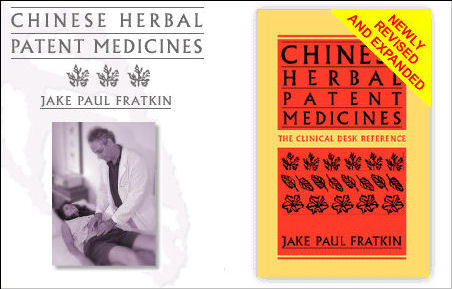 
|
